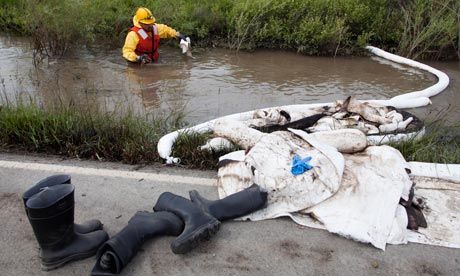
Clean-up crews have yet to reach the break in the 12-inch pipeline because of historic flooding on the river, which is projected to peak on Tuesday.
Montana's governor, Brian Schweitzer, who was due to visit areas near the spill site on Tuesday, has called for a safety inspection of all pipelines crossing the state and a review of the company's emergency response plans.
In its latest update, ExxonMobil said it was expanding its clean-up effort, deploying 280 people to help contain the damage. It was also conducting aerial searches for oil as far as 140 miles downstream.
But the firm said on its website that flooding, and swift river currents, meant it was still unsafe to send crews out in boats or to walk the banks in search of oil. It's not clear whether the break was caused by heavy rains and extreme flooding.
"The river is well over its banks, very turbulent," Gary Pruessing, head of ExxonMobil's pipeline company, told a news conference on Monday. "I've never seen the river like this in my life."
More than 40,000 US gallons (151,416 litres) of oil gushed into the river before the pipeline was shut down late on Friday night.
The break has further increased concern about pipeline safety after a fatal explosion of a natural gas pipeline in California, and a serious spill on an oil pipeline in Michigan in July last year.
The US department of transportation, which oversees pipeline safety, wrote to ExxonMobil in July last year, warning the company to take better precautions against corrosion and to update its emergency plan.
The letter warned the oil company it could be liable for up to $1m if it did not take steps to meet those safety standards. ExxonMobil received a second warning last February. The company said in March that it had addressed those concerns.



Reader Comments
to our Newsletter